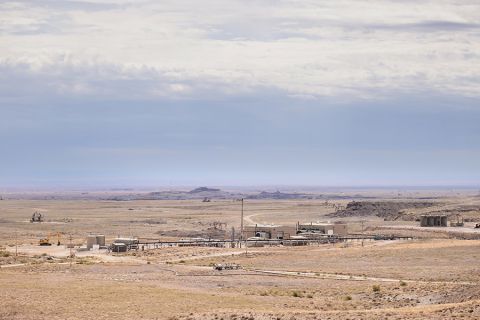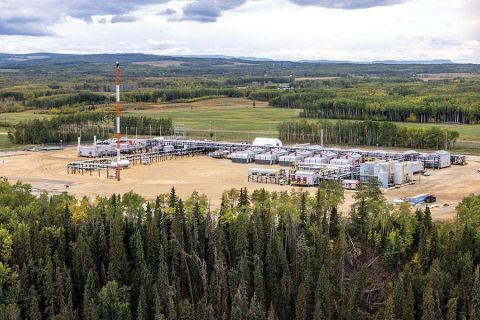The recent blowout in basis (price differentials) that has plagued many parts of the North American gas market, and most acutely apparent in the differentials between gas prices at the AECO trading hub in southern Alberta and Nymex, may well last through this winter heating season. Nonetheless, gas prices for 2006 at the AECO should still average around US$9 per million Btu (MMBtu), says Martin King, an energy-commodities research analyst for FirstEnergy Capital in Calgary. King notes that between late 2002 to mid-2005, the basis or price differential between the cash market for gas at AECO and the U.S. and North American benchmark cash price at Henry Hub in Louisiana remained fairly steady, with AECO prices trading in a discount range of US$0.50 to US$1 per MMBtu. However, starting in June 2005, the differential between the two hubs has steadily grown, hitting all-time highs well above US$2 per MMBtu on a sustained basis since mid-September 2005-"a span of time and values unprecedented in the past decade," the analyst observes. The Henry Hub market, and especially the Nymex futures market, form the foundation of nearly all North American gas pricing. The larger the basis, the lower the price level realized at other gas-trading locations such as AECO. King stresses that the Canadian producer isn't alone in experiencing this basis blowout: the U.S. Rockies have also been suffering a much wider basis in the past few months with respect to the Chicago citygate and the Henry Hub cash prices. The causes of this phenomenon appear to be several-the most important being the huge physical dislocation of gas supplies from the U.S. Gulf Coast and a very warm start to the 2005-06 winter heating season. Hurricane-related, shut-in gas supply from the Gulf of Mexico is expected to persist for many months, the analyst says. "Even optimistic assessments are suggesting that 1 billion cubic feet (Bcf) per day, or more, of production will still be out of action in first-quarter 2006, keeping supplies tight at Henry Hub, and gas prices higher than otherwise in relation to other markets. "In this case, a wider-than-normal basis relative to AECO and the U.S. Rockies may well persist for much of the heating season, if not longer."
Recommended Reading
Now, the Uinta: Drillers are Taking Utah’s Oily Stacked Pay Horizontal, at Last
2024-10-04 - Recently unconstrained by new rail capacity, operators are now putting laterals into the oily, western side of this long-producing basin that comes with little associated gas and little water, making it compete with the Permian Basin.
SM, Crescent Testing New Benches in Oily, Stacked Uinta Basin
2024-11-05 - The operators are landing laterals in zones in the estimated 17 stacked benches in addition to the traditional Uteland Butte.
With Montney Production Set to Grow, US E&Ps Seize Opportunities
2024-10-02 - Canada’s Montney Shale play has already attracted U.S. companies Ovintiv, Murphy and ConocoPhillips while others, including private equity firms, continue to weigh their options.
Matador May Tap Its Haynesville ‘Gas Bank’ if Prices Stabilize
2024-10-24 - The operator holds 8,900 net Haynesville Shale acres and 14,800 net Cotton Valley acres in northwestern Louisiana, all HBP, that it would drill if gas prices stabilize—or divest for the right price.
Matador’s U-lateral Delaware Tests Outproduce 2-mile Straight Holes
2024-10-30 - Matador Resources' results from eight Loving County, Texas, tests include two 2-mile U-turn laterals, five 2-mile straight laterals and one 1-mile straight lateral, according to state data.
Comments
Add new comment
This conversation is moderated according to Hart Energy community rules. Please read the rules before joining the discussion. If you’re experiencing any technical problems, please contact our customer care team.





